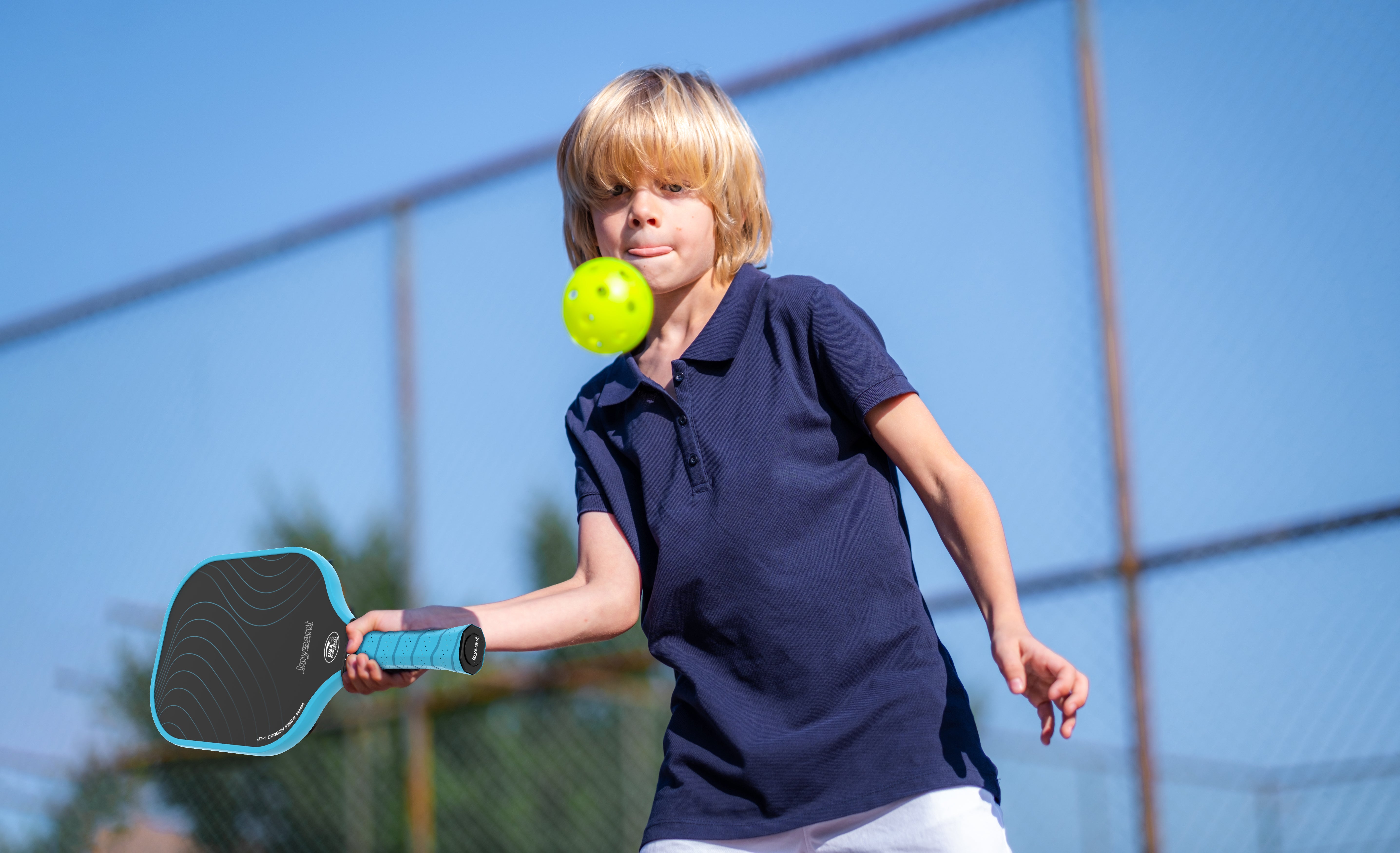
Indoor vs. Outdoor Pickleballs: What’s the Real Difference?
When you’re new to pickleball, you might assume all balls are the same.
But once you step onto different courts, you’ll quickly discover that indoor and outdoor pickleballs are not created equal.
Understanding their differences can significantly impact your performance—and your enjoyment of the game.
1. Hole Count and Size
The most noticeable difference between indoor and outdoor pickleballs is the holes.
-
Indoor balls typically have 26 larger holes, which create more air resistance. This slows the ball down and makes it easier to control, especially in slower-paced games.
-
Outdoor balls usually feature around 40 smaller holes to minimize wind resistance. These holes help the ball stay stable and accurate, even in breezy or unpredictable weather.
2. Ball Feel and Noise
Indoor balls are softer and quieter. They produce a less sharp “pop” when hit and don’t bounce as high. This allows for more control and longer rallies.
Outdoor balls are harder, faster, and louder. You’ll notice a more aggressive sound and bounce—ideal for high-speed games on rough surfaces like asphalt or concrete.
3. Durability and Wear
Outdoor pickleballs are built to withstand the sun, wind, and abrasive courts.
They’re made from tougher plastic and last longer, but over time they may crack or lose shape, especially in extreme heat.
Indoor balls are more sensitive to rough use but hold up better on smoother indoor gym floors.
They can become soft or slightly deformed after extended play but don’t typically crack.
4. Speed vs. Control
The playing environment influences your style.
-
Indoor games are often slower-paced, emphasizing precision, ball placement, and longer rallies.
-
Outdoor games tend to be faster and more aggressive, requiring quicker reflexes and stronger hits.
Choosing the right ball for your environment helps match your gear to your strategy.
5. Can You Use One Type for Both?
Technically yes—but it’s not recommended.
Using outdoor balls indoors can make the game feel too fast and harder to control.
Using indoor balls outdoors often results in erratic flight paths due to wind and quicker wear on rough surfaces.
If you’re playing both environments, carry both types of balls. It’s a simple switch that can greatly improve your experience.
Bonus Tip for Beginners
Many beginner sets (like our Joysent Arcus S1 Paddle Set) come with both indoor and outdoor balls.
That way, new players can explore different court types without guessing which ball to use.
Conclusion
In pickleball, small differences have a big impact.
Understanding the distinction between indoor and outdoor balls can elevate your performance and prevent unnecessary frustration.
Next time you pack your gear, double-check your ball choice. The right ball for the right court makes all the difference.








